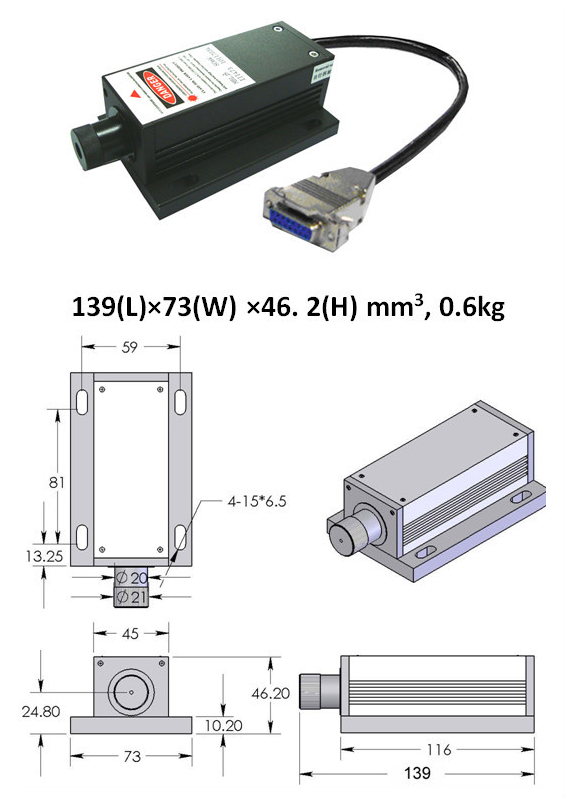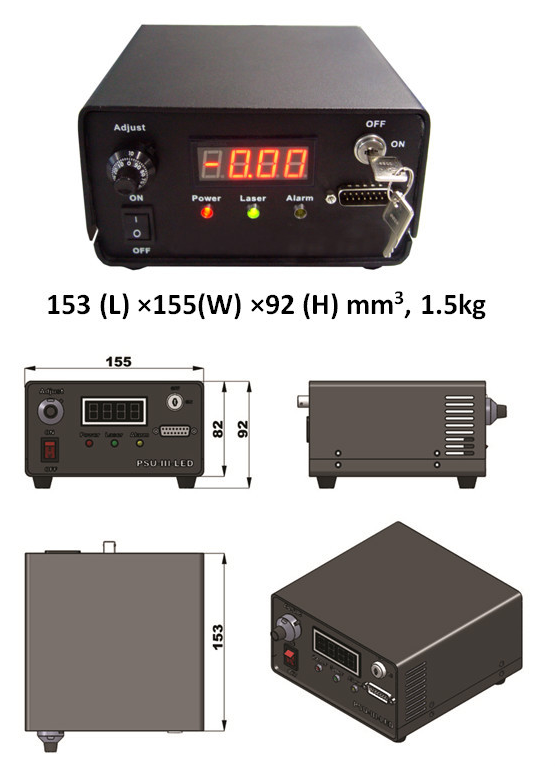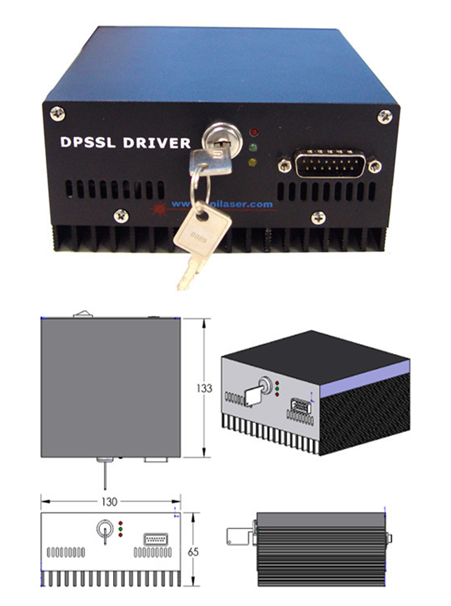488nm Blue Laser for flow cytometry and DNA sequencing
Blue laser module at 488 nm is made features of ultra compact, long lifetime, low cost and easy operating, which is used in medical imaging, flow cytometry, DNA sequencing, etc.
Specifications
Wavelength (nm) 488+-5
Output power (mW) >50, >150
Transverse mode Near TEM00
Operating mode CW
Power stability (rms, over 4 hours) <1%, 3% Warm-up time (minutes) <5 Beam divergence, full angle (mrad) ~1.0 Beam diameter at the aperture (mm) 3.0-5.0, elliptical Polarization ratio >100:1
Beam height from base plate (mm) 24.8
Pointing stability after warm-up (µrad/) <6
Operating temperature 10~45
Power supply (90-264VAC) PSU-III-LED PSU-III-AF
Modulation option TTL/Analog 1Hz-5KHz, 1Hz-10KHz, 1Hz-30KHz, and TTL on/off
Expected lifetime (hours) 10000
Warranty period 1 year
Applications:
flow cytometry and DNA sequencing





Flow cytometry is a technology that rapidly analyzes single cells or particles as they flow past single or multiple lasers while suspended in a buffered salt-based solution. Each particle is analyzed for visible light scatter and one or multiple fluorescence parameters.
Flow cytometry (FC) is a technique used to detect and measure physical and chemical characteristics of a population of cells or particles. In this process, a sample containing cells or particles is suspended in a fluid and injected into the flow cytometer instrument. The sample is focused to ideally flow one cell at a time through a laser beam, where the light scattered is characteristic to the cells and their components. Cells are often labeled with fluorescent markers so light is absorbed and then emitted in a band of wavelengths. Tens of thousands of cells can be quickly examined and the data gathered are processed by a computer
DNA sequencing refers to the general laboratory technique for determining the exact sequence of nucleotides, or bases, in a DNA molecule. The sequence of the bases (often referred to by the first letters of their chemical names: A, T, C, and G) encodes the biological information that cells use to develop and operate.
DNA sequencing is the process of determining the nucleic acid sequence – the order of nucleotides in DNA. It includes any method or technology that is used to determine the order of the four bases: adenine, guanine, cytosine, and thymine. The advent of rapid DNA sequencing methods has greatly accelerated biological and medical research and discovery.
Knowledge of DNA sequences has become indispensable for basic biological research, DNA Genographic Projects and in numerous applied fields such as medical diagnosis, biotechnology, forensic biology, virology and biological systematics. Comparing healthy and mutated DNA sequences can diagnose different diseases including various cancers,characterize antibody repertoire,and can be used to guide patient treatment. Having a quick way to sequence DNA allows for faster and more individualized medical care to be administered, and for more organisms to be identified and cataloged.
The rapid speed of sequencing attained with modern DNA sequencing technology has been instrumental in the sequencing of complete DNA sequences, or genomes, of numerous types and species of life, including the human genome and other complete DNA sequences of many animal, plant, and microbial species.
An example of the results of automated chain-termination DNA sequencing.
The first DNA sequences were obtained in the early 1970s by academic researchers using laborious methods based on two-dimensional chromatography. Following the development of fluorescence-based sequencing methods with a DNA sequencer,DNA sequencing has become easier and orders of magnitude faster.
